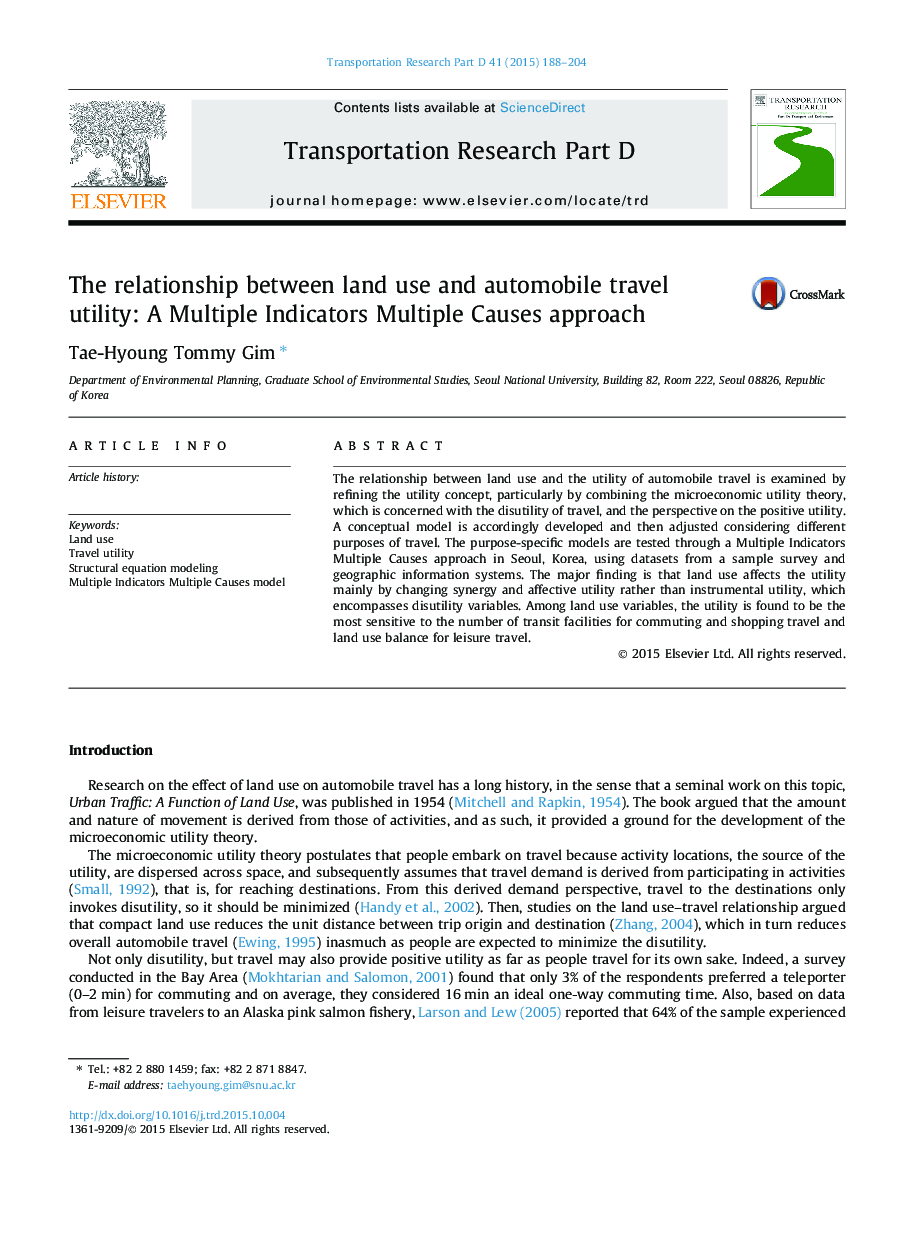| Article ID | Journal | Published Year | Pages | File Type |
|---|---|---|---|---|
| 7500032 | Transportation Research Part D: Transport and Environment | 2015 | 17 Pages |
Abstract
The relationship between land use and the utility of automobile travel is examined by refining the utility concept, particularly by combining the microeconomic utility theory, which is concerned with the disutility of travel, and the perspective on the positive utility. A conceptual model is accordingly developed and then adjusted considering different purposes of travel. The purpose-specific models are tested through a Multiple Indicators Multiple Causes approach in Seoul, Korea, using datasets from a sample survey and geographic information systems. The major finding is that land use affects the utility mainly by changing synergy and affective utility rather than instrumental utility, which encompasses disutility variables. Among land use variables, the utility is found to be the most sensitive to the number of transit facilities for commuting and shopping travel and land use balance for leisure travel.
Keywords
Related Topics
Life Sciences
Environmental Science
Environmental Science (General)
Authors
Tae-Hyoung Tommy Gim,
